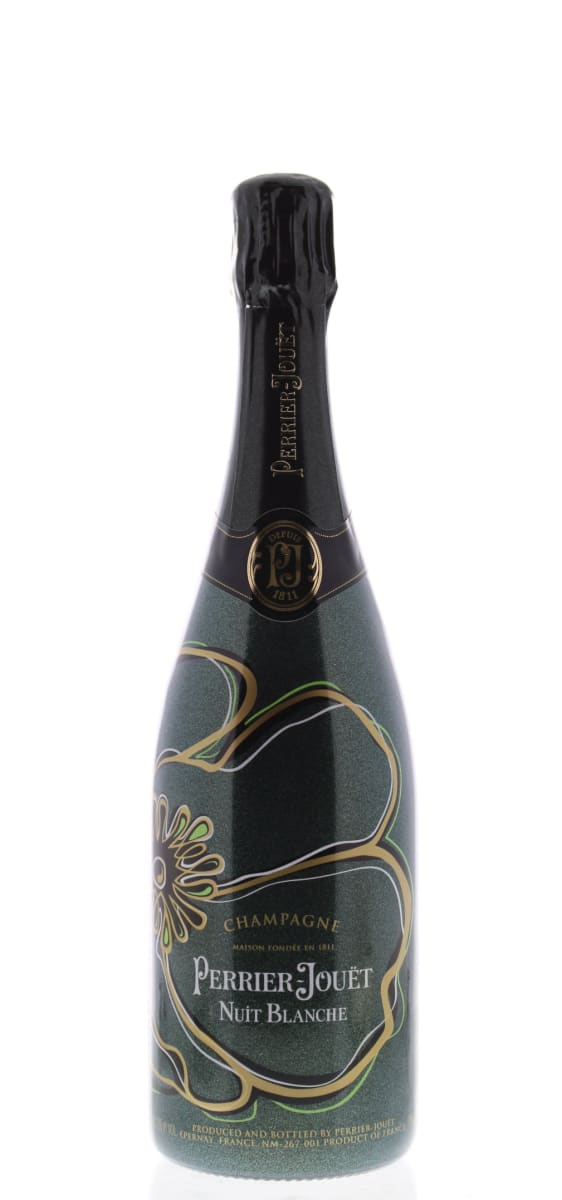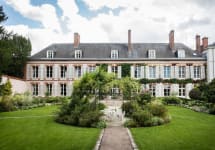Perrier-Jouet Nuit Blanche Champagne
-
Wilfred
Wong




Product Details
Your Rating
Somm Note
Winemaker Notes
Perrier-Jouët Nuit Blanche is an exceptional Non-Vintage blend of 20% Chardonnay, 40% Pinot Noir and 40% Pinot Meunier, sweetened to taste with a 20g/l dosage of cane sugar to create a sensual style.
The bottle of Perrier-Jouët Nuit Blanche has a distinctive look including curved decorative lines, a contemporary glittering dark green decor and an outsized reinterpretation of the iconic anemone, created by Emile Gallé in 1902.
Professional Ratings
-
Wilfred Wong of Wine.com
One of the biggest sweethearts of a wine from all the wines I had tasted in 2015, the Perrier-Jouët Nuit Blanche reached out and really touched my heart and wasn't even pink! Why, you ask? Well this wine is so alluring and pleasing that it leads to me to such delectable food such as unagi (freshwater eel, with a slightly sweetened sauce) and Hong Kong style spareribs in a well-balanced sauce. A great crowd pleaser, you will always be able to pour this one for friends who not necessarily wine experts and they will like it! Medium to dark straw yellow in color; active core fruit aromas, peaches and apple come to mind; medium bodied, textured and rounded on the palate; off-dry to slightly sweet, good acidity, well balanced; succulent and fresh core and stone fruit flavors; long and smooth in the finish. Tasted: November 17, 2015, San Francisco, CA)








Perrier-Jouët was founded in 1811 in Epernay by Pierre-Nicolas-Marie Perrier and his wife, Adele Jouët. One of the most prestigious houses in Champagne, the firm was shipping wine to Great Britain by 1813 and to the United States by 1837. Perrier-Jouët owns 266 acres of vineyards in Champagne, with an average rating of 95%, and is known worldwide for its consistency of style.
By the end of the 19th Century, its Brut cuvées earned the reputation of nobility and prestige that continues today. Perrier Jouët's glamorous "Cuvée Belle Epoque", known in the United States as Fleur de Champagne, was launched in 1969 and has become the most important cuvée de prestige to appear after World War II. The bottle is adorned with enamel-painted anenomes originally created by Emile Gallé in 1900, but the wine is as famous for its taste as it is for its beautiful packaging.

A term typically reserved for Champagne and Sparkling Wines, non-vintage or simply “NV” on a label indicates a blend of finished wines from different vintages (years of harvest). To make non-vintage Champagne, typically the current year’s harvest (in other words, the current vintage) forms the base of the blend. Finished wines from previous years, called “vins de reserve” are blended in at approximately 10-50% of the total volume in order to achieve the flavor, complexity, body and acidity for the desired house style. A tiny proportion of Champagnes are made from a single vintage.
There are also some very large production still wines that may not claim one particular vintage. This would be at the discretion of the winemaker’s goals for character of the final wine.

Associated with luxury, celebration, and romance, the region, Champagne, is home to the world’s most prized sparkling wine. In order to bear the label, ‘Champagne’, a sparkling wine must originate from this northeastern region of France—called Champagne—and adhere to strict quality standards. Made up of the three towns Reims, Épernay, and Aÿ, it was here that the traditional method of sparkling wine production was both invented and perfected, birthing a winemaking technique as well as a flavor profile that is now emulated worldwide.
Well-drained, limestone and chalky soil defines much of the region, which lend a mineral component to its wines. Champagne’s cold, continental climate promotes ample acidity in its grapes but weather differences from year to year can create significant variation between vintages. While vintage Champagnes are produced in exceptional years, non-vintage cuvées are produced annually from a blend of several years in order to produce Champagnes that maintain a consistent house style.
With nearly negligible exceptions, . These can be blended together or bottled as individual varietal Champagnes, depending on the final style of wine desired. Chardonnay, the only white variety, contributes freshness, elegance, lively acidity and notes of citrus, orchard fruit and white flowers. Pinot Noir and its relative Pinot Meunier, provide the backbone to many blends, adding structure, body and supple red fruit flavors. Wines with a large proportion of Pinot Meunier will be ready to drink earlier, while Pinot Noir contributes to longevity. Whether it is white or rosé, most Champagne is made from a blend of red and white grapes—and uniquely, rosé is often produce by blending together red and white wine. A Champagne made exclusively from Chardonnay will be labeled as ‘blanc de blancs,’ while ones comprised of only red grapes are called ‘blanc de noirs.’
